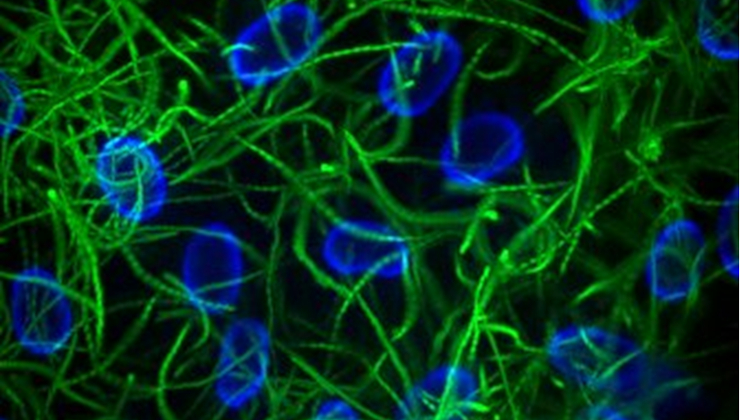The bacteria in our body are true patrollers, foraging for food and infective opportunities. To be able to move, they are equipped with one or several flagella that perform similar to propellers of a motor boat, rotating in one direction to move forward and in the other to move backward. This allows the bacteria to reach a substantial speed—of the order of 18 cm/h for Pseudomonas aeruginosa. In collaboration with ENS Lyon, a team from CEA-BIG has closely examined the distinctive features of this swimming behavior in bacteria, since, as CEA-BIG researcher Philippe Huber puts it, "characterizing the physical and biological parameters ruling it this behavior is essential to understand the stages leading to the colonization of the organism."
"Swimming close to surfaces induces a force moment on the body of the bacterium which creates a curvature in the trajectory" Huber says. "This allows the bacterium to employ several swimming modes." The scientists thereby evidenced three types of trajectories for P. aeruginosa, characterized by distinct speeds, curvatures or pauses. Seeking to differentiate the mechanical factors from the biological ones, they studied trajectories on an inert surface (glass) or in the vicinity of cells. "We found the three types of trajectories in both cases, but the slow trajectories are clearly favored in the biological system", says Philippe Huber. Why? The researchers showed that this preference for a slower pace is due to bacterial filaments other than flagella, very thin "bristles" called pili. These are equipped with adhesion proteins that recognize cellular receptors. In the vicinity of cells, the bacterium reduces its speed to slowly scan the surface and inquire about the possibility of finding nutrients. When getting close to an epithelial barrier (e.g. mucosal), it also adapts its way of swimming to find breaches that would allow it to cross and colonize the organism. "Chemical decoys could be used to scramble information and potentially reduce the infectious potential of pathogenic bacteria" concludes Huber.
